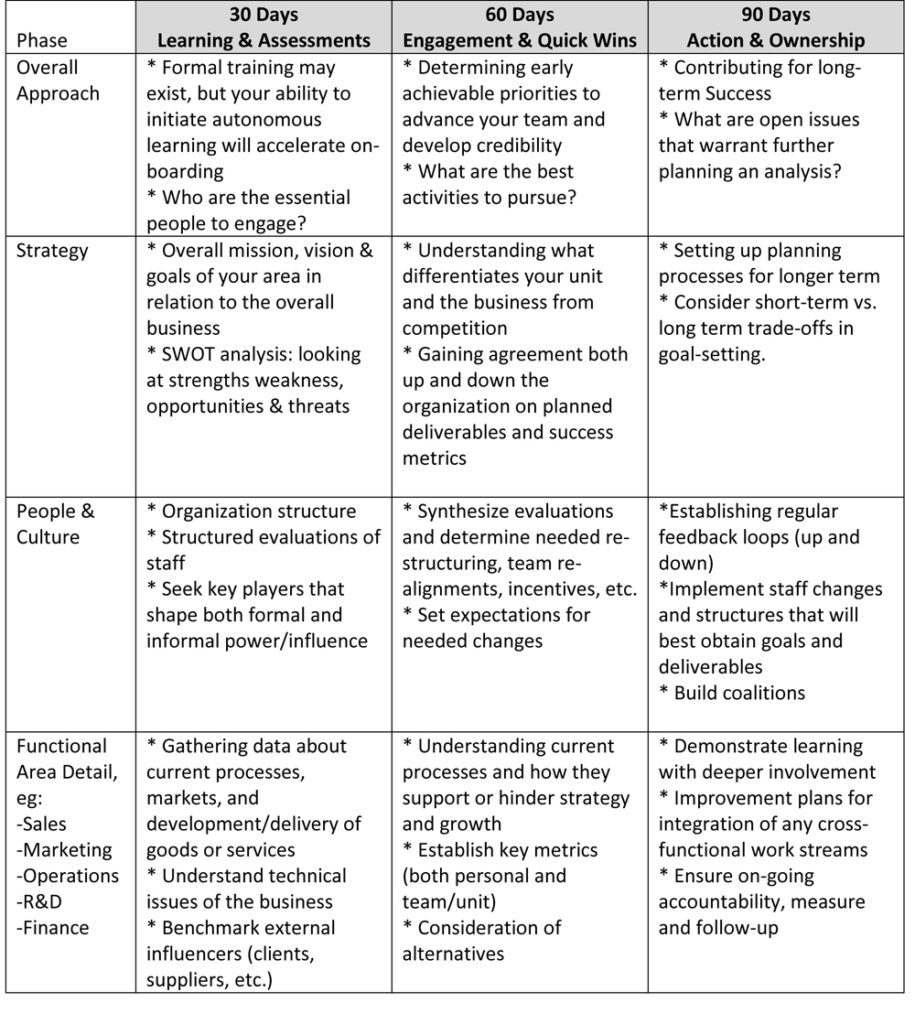Landing a new job requires not only demonstrating that you’ve got the required skills, but also convincing the hiring manager that you’re a great fit for his or her organization. Once hired, you typically have about 90-days grace period to establish yourself. This first three months in any new role or company is crucial. It’s a time to build credibility, get traction and assimilate.
Creating a detailed plan for your first 30, 60 and 90 days on the job can increase your chances to shine in interviews. In fact, for senior management roles, it’s increasingly common for the prospective employer to ask for a plan as part of their evaluation. Even if you aren’t asked to formally create a 90-day plan, it’s an excellent way to prepare for late-stage interviews or start in a new position.
By taking the time to build a specific plan, you’ll demonstrate that you’ve done your homework and that you take personal responsibility for being effective and productive as you on-board. A plan will reveal your ability to think strategically about the company. It also ensures the hiring manager that you understand the role and are ready to tackle any challenges it presents. As you communicate your ideas about a smooth transition, you’ll help the hiring team envision you in the role.
So, how do you go about creating an effective 30-60-90 day plan? To be sure, there are challenges — you may face time pressures, lack of visibility into the organization, or uncertainty about specific goals. But remember, making a plan at this stage isn’t about getting everything right, it’s more about asking good questions during initial discussions and researching to develop an informed point of view.
The plan itself is simply an outline of how you’ll approach the first three months on the job; it should be both detailed and customized to the specific employer. The information you need for building your plan can be found in a variety of ways:
- Job description and discussions with recruiter — be sure to delve deeper into specific pain points and what’s driving the need to hire for this role
- Interviewing — asking pertinent questions in the early rounds of interviews
- Networking — gathering details from both current and former employees; look to public profiles (e.g., LinkedIn) of peer or related positions
- Company’s public presence — checking multiple sources including the company’s own website, social media presence (Twitter, Instagram), investor and analyst reports, etc.
As you construct a plan, consider these key aspects of each phase:
Proactive planning is a great preparation aid for late-stage interviews or getting off on the right foot in a new position. Leadership guide and author Michael Watkins points out in The First 90 Days, “Your day-to-day actions during your transition will establish the pattern for all that follows, not just for the organization, but also for your personal efficacy and ultimately your well-being.” Check out his book if you’re interested in a deeper look at transition challenges.





